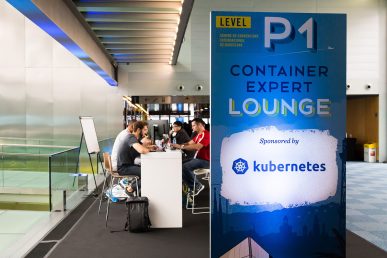Kata Containers is an open-source project and community working to build a standard implementation of lightweight virtual machines (VMs) that feel and perform like containers, but provide the workload isolation and security advantages of VMs. It combines technology from Intel® Clear Containers and Hyper runV from Hyper.Sh; the name is a nod to the Japanese word “form” or choreographed movement.
Superuser sat down with James Kulina, COO at Hyper.Sh, to find out more.
How did you get involved with OpenStack?
I’ve been involved with OpenStack for five or six years now. First at AT&T, helping them build their OpenStack cloud in all different kinds of use cases. From there, I went to a startup called eNovance that was bought by Red Hat so I was working on OpenStack at Red Hat for awhile…Now I’m at Hyper.sh. Overall, I’m pretty involved with the OpenStack community and knowledgeable about the ecosystem.
How did you get involved in Kata?
We’d been working with Intel for a little over a year and we actually launched our individual projects at around the same time. We started working on merging code and it got to a point where we thought that it’d be better suited to having an open governance, an open model and getting more community and an ecosystem around it, so we came together and decided that Kata should be created and pushed out for the community to consume.
Where do you see this fitting into the landscape?
It’s a foundational piece. It’s going to open up container-native workloads for new kinds of workloads. Because it’s virtualization-based, not hypervisor based, you’ll be able to tie into accelerators and legacy-type systems that people trust and use already. It actually makes a very unique and easy migration path for people who are already using legacy virtualization to start consuming containers and container-native workloads.
What use cases do you see?
Initially, mostly around container-as-a-service. That’s the simplest one that people can understand, it’ll be for people who are already dipping their feet into Kubernetes and using Kubernetes to scale container applications. But it’ll go in a lot of different ways, fairly quickly, I think: a lot of different verticals (financial services, telcos, internet of things, edge) will all benefit from this type of security, performance and integration.
You were at the Kata booth during KubeCon, what kinds of questions did you get?
Mostly just about how these companies came together, and a little bit about how it actually works. Some people were looking for more detail about how the underpinnings work; there’s a little bit of inertia that we have to get over in terms of people having their own definition of what container native means. We’re trying to work with that definition and expand it.
A couple of questions I overheard were about bare metal and the Clear Container Initiative.
It’s because you can actually run Kubernetes on bare metal and have full isolation between the pods, so you get a multi-tenant type installation where you can run untrusted code side by side.
So Clear Containers launched the same month that we launched with our Hyper runV project and the vision for both was incredibly the same (laughs) so that’s why it made sense to merge this and go open source.
Were there a lot of questions about how these projects all fit together?
Yes. There were definitely a lot of technical questions around how the projects came together in terms of code base. Some of the code has already been merged, but we’re looking to the community to get involved and help.
What kind of contributions do you need most?
Mostly around integrations with the different virtualization technologies as well as the CRI interface that we’re doing, some work around that could be very beneficial We’re already talking with a number of community members from Kubernetes and OpenStack about this. There’s a lot of work that people can contribute to, there’s a GitHub repo they can go check out.
Where would you like to see this in a year?
I’d love to see this being used in production. It’s already being used in terms of our technology, but for the Kata project to have a migration path for a production system, maybe on someone’s cloud or in a hybrid scenario. Right now, our goal for the short term is to get people to understand the technology, start contributing and start talking about it. In year from now, hopefully they’ll have stood it up, tested it out, tried it out and maybe gone into production.
Anything else you want people to know?
The one thing we’ve always talked about at Hyper: make containers as simple as possible. To take the headache out going from something working on your laptop to working in the cloud. With Kata, you’ll start to see that become reality.
What’s the best way to get involved right now?
https://github.com/kata-containers
http://webchat.freenode.net/?channels=kata-dev
Slack https://katacontainers.slack.com/
- OpenStack Homebrew Club: Meet the sausage cloud - July 31, 2019
- Building a virtuous circle with open infrastructure: Inclusive, global, adaptable - July 30, 2019
- Using Istio’s Mixer for network request caching: What’s next - July 22, 2019

)










